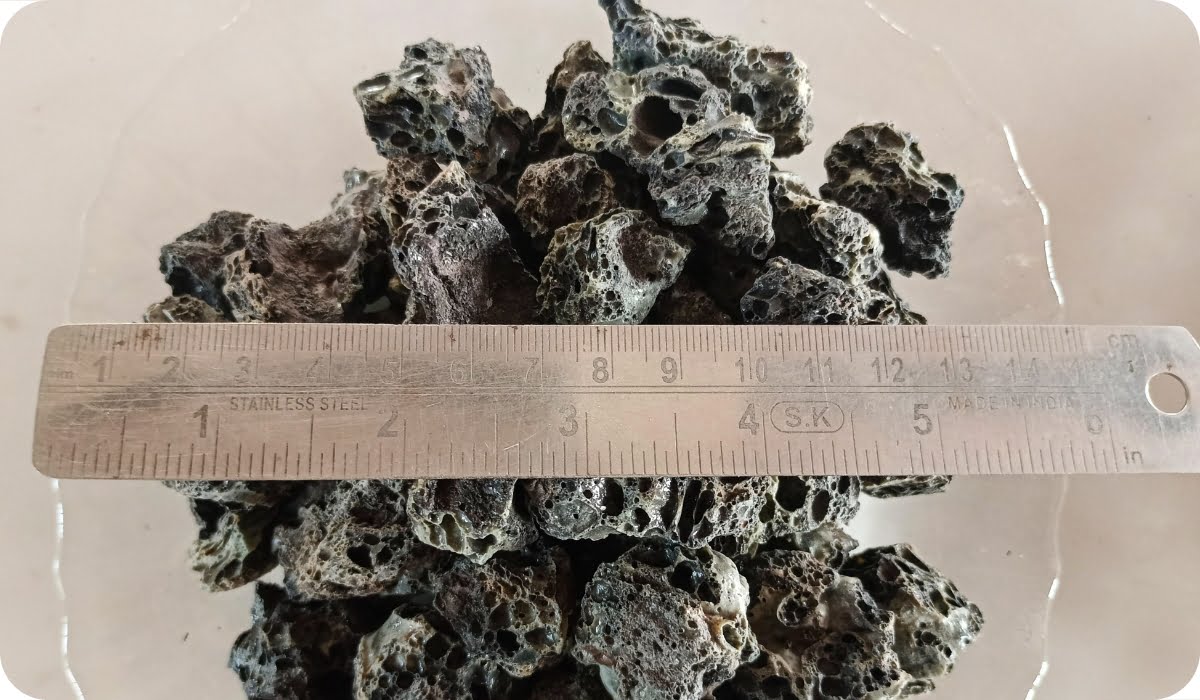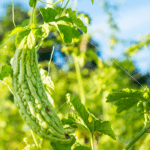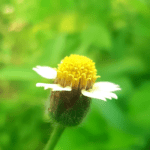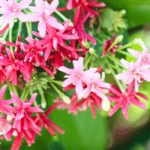Elevate your Gardening and Aquarium experience with our versatile Porous Lava Volcanic Rocks. Enhance soil drainage, promote plant health, and achieve superior filtration. Discover the benefits today!
An Introduction
Gardening and aquaculture enthusiasts can revolutionize their care routines and achieve remarkable results. In this comprehensive guide, we will explore the importance and usage of porous lava rocks in both gardening and aquarium settings.
Porous lava rocks, derived from natural volcanic pumice stones, offer a multitude of benefits that can transform the way you nurture your plants and maintain your aquarium. With their exceptional properties such as enhanced drainage, improved aeration, and optimal moisture retention, lava rocks are indispensable tools for every gardener and aquarist.
In the following sections, we will delve into the numerous advantages of using porous lava rocks, covering their applications in gardening as well as their significant role in aquarium filtration. We will also provide insights on selecting the right lava rocks for your specific needs and offer practical tips on incorporating them into your gardening and aquarium setups.
Are you ready to unlock the potential of porous lava rocks and take your plant and aquatic care to new heights? Let’s dive in!

The Power of Porous Lava Volcanic Rocks in Gardening
Enhanced Drainage for Healthier Plants
Porous lava rocks act as natural drainage agents, ensuring excess water flows freely through the soil. Their porous nature allows water to percolate easily, preventing waterlogging and the associated risks of root rot and fungal diseases. By enhancing soil drainage, lava rocks promote healthy root systems, enabling plants to access essential nutrients effectively.
Improved Aeration for Optimal Plant Respiration
In addition to facilitating drainage, porous lava rocks significantly improve soil aeration. Their porous structure creates air pockets within the soil, allowing oxygen to reach the roots. Optimal oxygen levels in the root zone enhance plant respiration, promoting vigorous growth, and minimizing the risk of root suffocation.
Optimal Moisture Retention for Plant Growth
Despite their excellent drainage properties, lava rocks also excel at moisture retention. The porous structure enables them to absorb and hold water, gradually releasing it back to the soil as needed. This unique characteristic helps maintain a balanced moisture level, preventing both under and overwatering, and providing plants with a consistent water supply for healthy growth.
pH Stability for Balanced Soil Conditions
Maintaining an appropriate soil pH is crucial for the well-being of plants. One of the remarkable features of porous lava rocks is their neutrality. They do not alter the soil pH significantly, ensuring a stable environment for plants that prefer specific pH conditions. Whether you have acid-loving or alkaline-loving plants, lava rocks won’t disrupt the pH balance.
Natural Soil Amendment for Improved Nutrition
Porous lava rocks offer more than just physical benefits. They are a rich source of essential minerals and trace elements, which leach into the soil over time. These natural amendments enhance soil fertility, providing plants with a nutrient boost for robust growth and vibrant foliage. By incorporating lava rocks into your garden, you can improve overall plant nutrition organically.
Water Conservation with Reduced Watering Frequency
As sustainable gardening practices gain importance, water conservation becomes a top priority. Porous lava rocks are fantastic allies in this endeavor. Their ability to retain moisture within their porous structure reduces the frequency of watering. By using lava rocks in your garden, you can conserve water resources while ensuring your plants receive adequate hydration.
Promoting Robust Root Development
Strong root systems are the foundation of healthy plants. Porous lava rocks play a crucial role in promoting robust root development. Their porous structure creates an ideal environment for root growth, allowing roots to penetrate easily and access vital nutrients. With lava rocks in your garden, you can nurture plants with well-established root systems, leading to overall plant vigor and resilience.
Preventing Soil Compaction for Better Root Penetration
Soil compaction can be detrimental to plant health, hindering root penetration and inhibiting nutrient uptake. Porous lava rocks contribute to enhancing soil structure, preventing compaction, and improving overall soil quality. By incorporating lava rocks into your garden beds, you create an environment that encourages healthy root growth and provides optimal conditions for plant development.
Long-lasting Performance for Sustainable Benefits
Durability is a key characteristic of porous lava rocks. Unlike other materials that degrade over time, lava rocks offer long-lasting performance, maintaining their physical and chemical properties for years. This quality ensures that the benefits provided by lava rocks are sustainable, giving you lasting improvements in your garden’s health and productivity.
Versatile Applications for Various Plant Types
Porous lava rocks are incredibly versatile and can be used with a wide range of plants, making them indispensable for gardeners of all kinds. Whether you’re cultivating orchids, bonsai trees, succulents, or any other plant type, lava rocks can adapt to suit their specific needs. Their neutral nature and physical properties make them suitable for a diverse array of plant species.
Aquarium Filtration Made Efficient
Beyond the realm of gardening, porous lava rocks prove to be invaluable in aquarium setups. Their porous structure creates an ideal environment for beneficial bacteria colonization, an essential process for efficient biological filtration. Lava rocks provide ample surface area for bacteria to establish colonies, aiding in the breakdown of harmful substances and maintaining water quality.
An Eco-Friendly Choice for Gardeners
As environmental consciousness grows, choosing sustainable gardening practices becomes increasingly important. Porous lava rocks align with this ethos as they are derived from natural volcanic pumice stones, free from artificial materials or chemicals. By opting for lava rocks in your garden, you contribute to preserving the environment while nurturing your plants.
Harnessing the Power of Porous Volcanic Lava Rocks in Aquariums
Aquarium enthusiasts understand the importance of creating a balanced and healthy aquatic environment for their fish and other aquatic inhabitants. Porous lava rocks offer unique advantages that make them an excellent choice for aquarium setups. Let’s explore how lava rocks can revolutionize your aquarium care:
Superior Filtration and Water Quality
Maintaining optimal water quality is crucial for the well-being of aquarium inhabitants. Porous lava rocks serve as highly efficient biological filtration media. The porous structure provides ample surface area for beneficial bacteria to colonize, aiding in the breakdown of harmful substances such as ammonia and nitrites. This natural filtration process helps establish a stable and healthy aquatic ecosystem, promoting the longevity and vibrancy of your fish and plants.
Natural pH Regulation
Creating and maintaining the right pH level is essential for the health of aquarium inhabitants. Lava rocks, with their neutral pH nature, contribute to stabilizing the water’s acidity or alkalinity. They act as a buffer, preventing drastic pH fluctuations that can be stressful or harmful to aquatic life. By incorporating lava rocks in your aquarium, you create a more natural and stable pH environment, which is particularly beneficial for sensitive species.
Beneficial Mineral Release
Lava rocks are not only visually appealing but also rich in essential minerals. Over time, these minerals leach into the water, providing additional nutrients for your aquatic plants and invertebrates. This natural mineral release can help promote healthy plant growth, vibrant colors, and overall well-being in your aquarium. It mimics the natural environment where aquatic life thrives, making lava rocks a valuable addition to any aquarium setup.
Creating Hiding Places and Natural Aquascapes
Aquarium aesthetics play a significant role in creating an appealing and natural-looking underwater landscape. Porous lava rocks offer a versatile and visually appealing option for aquascaping. Their unique shapes and textures allow for the creation of caves, crevices, and hiding places that mimic the natural habitats of fish and invertebrates. These hiding spots provide a sense of security for shy or territorial species, reducing stress and promoting natural behaviors.
Enhancing Biological Diversity
Aquariums that mimic natural ecosystems are not only visually captivating but also support a diverse range of organisms. The porous structure of lava rocks promotes the growth of beneficial bacteria, algae, and microorganisms that form the foundation of the aquatic food chain. By incorporating lava rocks, you create a thriving ecosystem where beneficial organisms flourish, contributing to the overall ecological balance within your aquarium.
Thermal Insulation and Stability
Maintaining stable water temperature is crucial for the well-being of aquarium inhabitants. Lava rocks possess excellent thermal insulation properties, helping to regulate temperature fluctuations. They act as natural insulators, reducing the impact of external temperature changes and providing a more stable environment for your fish and plants. This stability can help reduce stress on aquatic organisms, promoting their overall health and vitality.
Versatility in Aquatic Setups
Porous lava rocks are incredibly versatile and can be used in various aquatic setups. Whether you have a freshwater or marine aquarium, a planted tank, or a reef system, lava rocks can adapt to suit your specific needs. Their neutral nature and ability to enhance biological filtration make them suitable for a wide range of aquatic environments. You can incorporate lava rocks as part of your aquascaping design or use them strategically for their filtration and aesthetic benefits.
Easy Maintenance and Durability
Aquarium enthusiasts appreciate low-maintenance solutions that provide long-lasting benefits. Lava rocks are easy to clean and require minimal upkeep. They are durable and can withstand the rigors of aquarium life without degrading over time. Unlike artificial filtration media that may need frequent replacement, lava rocks provide a cost-effective and sustainable option that can last for years, ensuring ongoing benefits for your aquarium ecosystem.
Choosing the Right Volcanic Lava Rocks for Your Needs
When it comes to selecting lava rocks for your gardening or aquarium endeavors, there are several factors to consider. Understanding the different sizes and variations available will help you make an informed decision and ensure the best results. Here’s what you need to know:
Understanding the Different Sizes and Variations
Lava rocks come in a range of sizes and variations, each serving a specific purpose. Here are the common sizes you’ll come across:
- 1/2 to 1 inch: These smaller lava rocks are ideal for potted plants, terrariums, and smaller aquarium setups. They provide excellent drainage and aeration for the roots while adding a natural touch to the display.

- 1 to 2 inches: Medium-sized lava rocks work well for larger potted plants, landscape applications, and medium-sized aquariums. They offer a balance between aesthetics and functionality, allowing for adequate water circulation and root health.

- 2 to 6 inches: Larger lava rocks are perfect for landscaping projects, outdoor gardens, and large aquariums. Their size and weight make them ideal for creating focal points, retaining walls, or adding texture to your aquascape.

Apart from size, lava rocks also come in different variations, such as black, grey, or red. Consider the overall aesthetic you want to achieve and how the color of the rocks will complement your existing decor or theme.
Best Practices for Handling and Preparing Lava Rocks
Before incorporating lava rocks into your gardening or aquarium setup, it’s essential to follow some best practices for handling and preparing them. Here’s a step-by-step guide:
- Cleaning: Rinse the lava rocks thoroughly to remove any dust, debris, or loose particles. This will ensure a clean and safe environment for your plants or aquatic life.
- Sterilization: To eliminate any potential contaminants, you can sterilize the lava rocks by soaking them in a diluted bleach solution or boiling them. This step is crucial, especially when introducing lava rocks to a new aquarium to prevent the introduction of harmful substances.
- Curing: Lava rocks may release some minerals or impurities initially. To minimize any potential impact on water parameters, it’s recommended to cure the rocks by soaking them in clean water for a few days or weeks. This process allows any excess minerals to leach out before adding the rocks to your aquarium or garden.
How to Incorporate Porous Volcanic Lava Rocks in Your Gardening and Aquariums
Now that you have chosen the right lava rocks and prepared them appropriately, it’s time to explore how to effectively incorporate them into your gardening and aquarium setups. Here are some practical tips and ideas to get you started:
Step-by-Step Guide for Using Lava Rocks in Gardens
- Plan the Layout: Determine where you want to place the lava rocks in your garden. Consider creating borders, pathways, or decorative features that will enhance the overall aesthetics.
- Prepare the Soil: Clear the area and prepare the soil by removing weeds and loosening it. If you have heavy clay soil, amending it with organic matter will improve drainage.
- Layer the Rocks: Start by placing a layer of lava rocks at the bottom of the planting hole or container. This will promote better drainage and prevent waterlogged roots.
- Mulching: Spread a layer of lava rocks around the base of your plants to act as a natural mulch. This will help retain moisture, suppress weed growth, and protect the soil from temperature fluctuations.
- Rock Gardens: Create a stunning rock garden by arranging lava rocks of different sizes and shapes. This will add texture and visual interest to your landscape.
Creating Stunning Aquatic Landscapes with Lava Rocks
- Aquascape Design: Plan your aquascape layout, considering the size and shape of your aquarium. Use lava rocks as focal points, creating caves, arches, or elevated platforms for your aquatic plants and fish to explore.
- Stacking and Stabilizing: Carefully stack lava rocks to create natural-looking structures. Ensure they are stable and won’t shift or collapse, especially in larger aquariums.
- Planting Aquatic Flora: Secure aquatic plants between the crevices of the lava rocks. This will give them a natural and visually appealing habitat, while the porous nature of the rocks allows for proper root growth and nutrient absorption.
- Fish and Invertebrate Hideouts: Utilize lava rocks to create hiding spots for your fish and invertebrates. The irregular shapes and crevices provide shelter, reduce stress, and encourage natural behavior.
Frequently Asked Questions (FAQs)
What are lava rocks for plants?
Lava rocks serve multiple purposes for plants. They are commonly used in gardening and landscaping for their ability to improve soil drainage and aeration. Lava rocks also help retain moisture in the soil while preventing waterlogged roots. Additionally, they act as a natural barrier against weeds and provide stability to potted plants.
Is lava rock good for gardens?
Absolutely! Lava rock is highly beneficial for gardens. Its porous nature promotes proper drainage, preventing waterlogging and root rot. It also helps regulate soil temperature, providing an optimal environment for plant growth. Lava rocks add texture, visual interest, and a natural touch to garden landscapes.
How to landscape with lava rock?
- Landscaping with lava rocks can elevate the visual appeal of your outdoor spaces. Here are some tips to incorporate lava rocks into your landscape design:
- Start by outlining the areas where you want to use lava rocks, such as garden beds, pathways, or focal points. Prepare the soil by removing any weeds or debris.
- Choose the appropriate size and color of lava rocks to complement your overall design. Smaller rocks work well for ground cover, while larger ones can be used as decorative accents.
- Place lava rocks strategically, ensuring proper drainage and layering them to create depth and dimension. Combine them with plants, boulders, or water features to achieve a harmonious look.
- Regularly inspect and maintain your lava rock landscaping, removing any debris or accumulated dirt. Additionally, consider replenishing the rocks over time to maintain their aesthetic appeal.
Lava rock garden ideas?
Lava rocks offer endless possibilities for garden design. Here are some creative ideas to incorporate lava rocks into your garden:
- Create a Zen garden: Arrange lava rocks in a raked gravel bed, combining them with carefully placed plants and ornaments to create a tranquil and meditative space.
- Build a rock garden: Use lava rocks of various sizes and shapes to construct a visually appealing rock garden, incorporating drought-tolerant plants and ground covers.
- Design a succulent garden: Arrange lava rocks as a decorative mulch around a collection of succulent plants, providing excellent drainage and a striking contrast.
- Craft a water feature: Build a cascading waterfall or a rock pool using lava rocks as the main material, adding an element of serenity and natural beauty to your garden.
- Showcase a focal point: Use larger lava rocks as a centerpiece in your garden, highlighting a sculpture, statue, or vibrant plant to create a captivating focal point.
Lava rocks can also be used in gardens in various ways to enhance their functionality and visual appeal. Here are some practical applications:
- Mulching: Spread a layer of lava rocks around plants to conserve moisture, suppress weed growth, and protect the soil from erosion.
- Drainage improvement: Place a layer of lava rocks at the bottom of pots or garden beds to facilitate better drainage and prevent waterlogging.
- Aesthetic accents: Use lava rocks strategically to create focal points or borders, adding texture and visual interest to your garden design.
- Rock gardens: Construct a rock garden using lava rocks as the main material, arranging them in an aesthetically pleasing manner and combining them with appropriate plants for a unique landscape feature.
- Water features: Incorporate lava rocks into the design of water features, such as ponds or waterfalls, for a natural and captivating look.
Remember to consider your garden’s overall theme and your personal preferences while exploring lava rock garden ideas. The possibilities are limited only by your imagination!
How to incorporate porous lava rocks in gardening and aquariums?
Porous lava rocks can be effectively incorporated into gardening and aquarium setups to enhance their functionality and aesthetics. Let’s explore how you can use them in each context:
In gardening: Use porous lava rocks as a component in potting mixtures and garden soils. They improve drainage and aeration, prevent compaction, and promote root health. Place a layer of lava rocks at the bottom of containers or garden beds to facilitate water movement and prevent waterlogging.
In aquariums: Utilize porous lava rocks as a substrate in aquariums. Rinse them thoroughly before adding to the tank to remove any loose particles. Lava rocks provide beneficial surface area for the colonization of beneficial bacteria, which helps maintain water quality and balance. They also create a natural and visually appealing aquascape when combined with plants and other decorative elements.
Remember to choose lava rocks specifically intended for gardening or aquarium use to ensure they are free from harmful contaminants and suitable for their respective applications.
How to create stunning aquatic landscapes with lava rocks?
Lava rocks can be used to create visually striking aquatic landscapes in aquariums. Here’s a step-by-step guide:
- Rinse the lava rocks thoroughly under running water to remove any loose debris or dust.
- Arrange the rocks in your aquarium, creating an appealing layout. Consider the size, shape, and color variations to achieve a natural look.
- Stack the lava rocks to create height and depth, providing hiding places and visual interest for fish and other aquatic creatures.
- Combine the rocks with live aquatic plants to create a harmonious and natural aquascape. Attach the plants to the rocks using suitable substrates or adhesive.
- Take caution not to overcrowd the aquarium with rocks, leaving enough open space for swimming and maintaining water circulation.
- Monitor water parameters regularly and ensure the rocks do not interfere with the filtration system. Clean the rocks periodically to remove algae or debris buildup.
Creating an aquatic landscape with lava rocks requires careful consideration of the needs and preferences of the aquatic inhabitants. Research suitable fish and plant species that thrive in such environments and design accordingly.
Where to buy lava rock for landscaping?
When it comes to purchasing lava rocks for landscaping, Shehri Kisaan is a reliable and reputable source. We offer a wide selection of lava rocks in various sizes to cater to different landscaping needs and requirements. Our lava rocks are authentic and porous, ensuring their effectiveness and functionality in your landscaping projects.
To conveniently browse and purchase lava rocks, you can visit our website at www.shehrikisaan.com. It’s important to note that there are sellers in the market offering ordinary black or red stones that may resemble lava rocks but lack their unique properties. These imitations are heavy and non-porous, making them unsuitable for landscaping purposes.
To ensure you acquire genuine lava rocks that are porous and lightweight, it is recommended to reach out to our Shehri Kisaan sales team or visit our website directly. We are committed to providing high-quality lava rocks that will enhance the beauty and functionality of your landscaping projects.
Conclusion
Incorporating porous lava rocks into your aquarium can truly revolutionize your aquatic experience. From superior filtration and water quality to natural pH regulation, beneficial mineral release, and the creation of captivating aquascapes, lava rocks offer a range of benefits for both fish and plant life. Their thermal insulation properties, versatility, and easy maintenance make them a valuable addition to any aquarium setup. Elevate your aquarium care and provide your aquatic inhabitants with a thriving and natural environment by harnessing the power of porous lava rocks.









